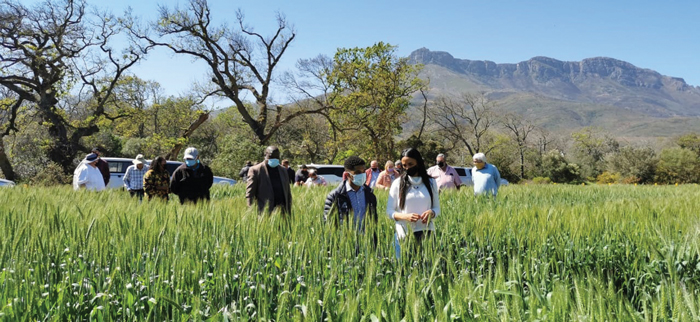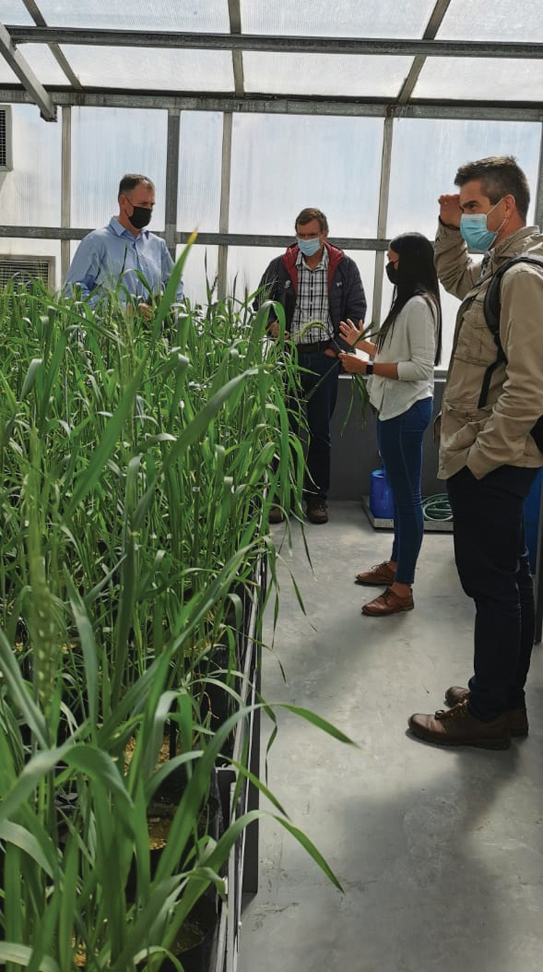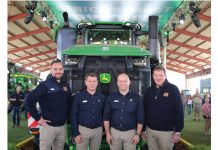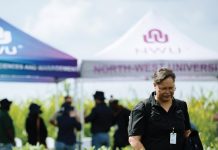The Grain SA Research and Policy Centre team manages and coordinates research efforts in a consortium-based approach. The three main research consortia are Crop Improvement, Plant Health and Climate Resilience and were established to address the needs of industry and government.
Further initiatives the team is involved with include food and nutrition security and farmer development innovation support, cultivar evaluations as well as human capital development. This article will provide a short overview of the Crop Improvement consortium and highlight its key initiatives.
Background
The wheat industry has been under severe pressure the past few decades due to a combination of economic factors as well as unfavourable climatic conditions. A further contributing factor is the wheat yield versus quality conundrum (the inverse relationship between the two traits) which has affected profitability for producers and has led to a decline in area planted over time. The ultimate incentive for producers is access to higher-yielding cultivars that are locally adapted and more tolerant to biotic and abiotic stress factors. This is a key component needed for producers to increase the area planted to wheat and the subsequent improvement in South Africa’s self-sufficiency.
Genetic diversity of local wheat breeding programmes has systematically narrowed over time. Diversifying the gene pool was identified as one of the key priority areas to support local breeding programmes and subsequently the local wheat industry. Germplasm adaptation can be achieved through pre-breeding. Paired with efficient breeding and selection methods, this can increase the genetic yield potential significantly.


Overview of the Wheat Breeding Platform
The Wheat Breeding Platform (WBP) was established in 2014 and speaks to national priorities of sustainability and food security. This initiative is coordinated by Grain SA, but numerous role-players are involved, including industry, breeding companies, researchers and government. The WBP incorporates experts from both the public and private sector to assist local breeding efforts for improved yield.
The WBP is working to strengthen local breeding efforts through research aimed at providing access to improved genetics and higher-yielding, locally adapted germplasm. Funding from the Department of Science and Innovation (DSI) and the South African Winter Cereal Industry Trust (SAWCIT) (previously the Winter Cereals Trust) provided opportunities for an increased and more efficient use of resources through the alignment of national and regional activities and pooling of financial resources.
Pre-breeding is one of the most effective ways to achieve the introduction of existing and/or novel genes and/or traits into breeding programmes. Wheat germplasm is sourced from various national and international nurseries for the programme. From these lines, desirable traits are identified and transferred to locally adapted germplasm. Genotypic and phenotypic technologies are employed to assist with selection of germplasm containing traits of interest. The resultant germplasm is then made available to breeding programmes to carry out the breeding and selection of new cultivars which will include novel traits stemming from pre-breeding activities.
Importance of pre-breeding for local breeding programmes
Genetic diversity within a breeding programme is the crux of developing new cultivars and pre-breeding has a primary focus on improving the genetic diversity. The WBP has made significant contributions to the breeding programmes of the three local breeding companies, namely Syngenta, Corteva and the Agricultural Research Council (ARC-Small Grains). While breeding companies invest in in-house pre-breeding programmes, Stellenbosch University (SU) plays a key role in supporting local programmes by expanding the genetic diversity.
As a leading research institution, SU has an extensive network of collaborators and has set up capacity for genotypic and phenotypic technologies to improve national pre-breeding for all wheat breeding programmes operating in South Africa. The SU pre-breeding laboratory has therefore been an important source of new germplasm in local breeding programmes and uptake from the programme is generally higher than from international germplasm sources such as the International Maize and Wheat Improvement Centre (CIMMYT). This is largely because local pre-breeding material is better adapted to local environmental conditions.
Conclusion
The reasons for the decline in local wheat production are numerous, including aspects of profitability and unfavourable environmental conditions. Investment in pre-breeding and breeding of higher-yielding/better adapted cultivars is a cornerstone of competitiveness and sustainability for the wheat industry.



















